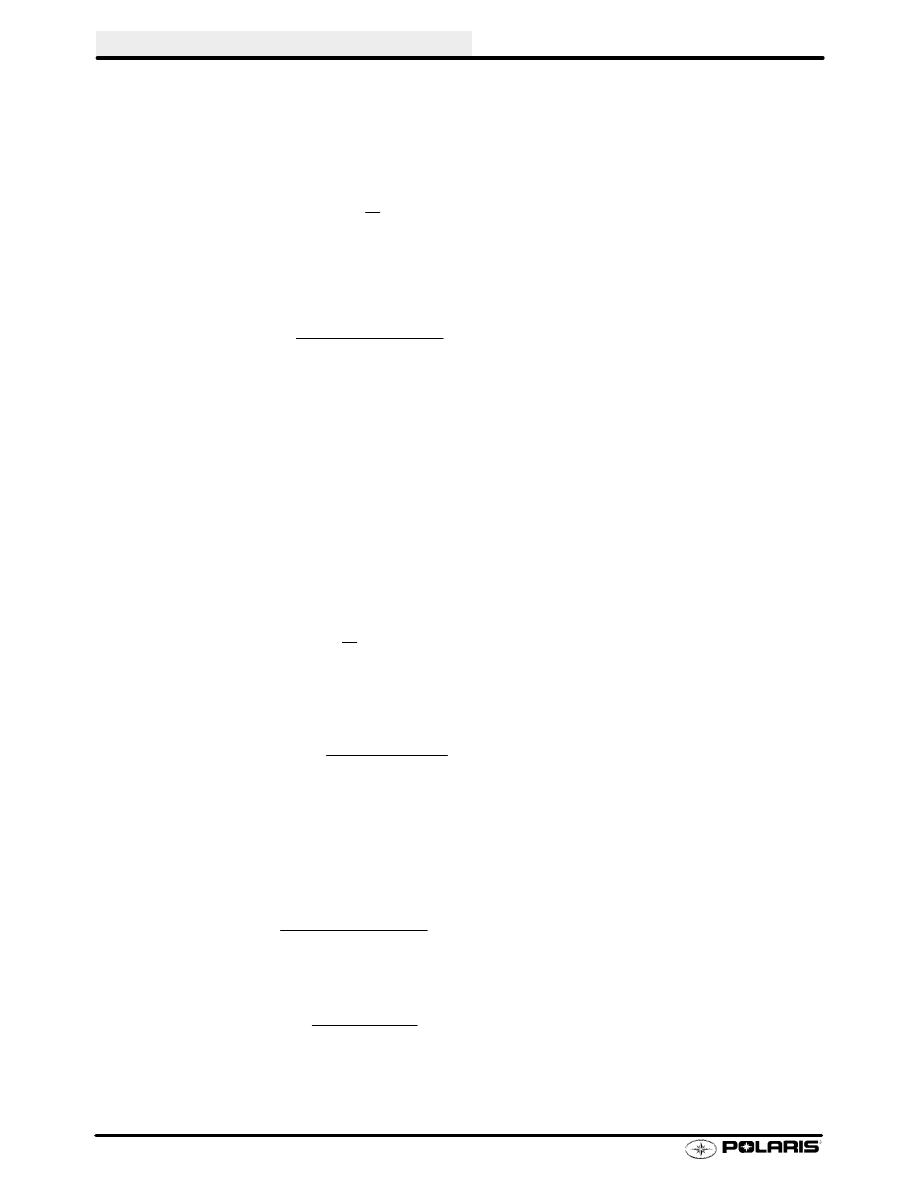Snowmobile Polaris High Performance (2001 year). Manual - part 15

ENGINE
2.6
Bore = 6.5 cm
Stroke = 6.0 cm
IHV = 17.1 cc
Displacement =
↓
Bore
Stroke
′
♦
σ↓ ″ ♣ψϒ♦ϒ♠τ
Displacement = 199.098 cc
R =
IHV + Displacement
IHV
R = 12.643
Full Stroke Compression Ratio
To calculate the Effective Compression Ratio, substitute the exhaust port height for the stroke in the
formulas above:
Exhaust = 2.95 cm
Exhaust port height 29.5 mm
Eff Disp =
↓
Bore
Stroke
′
♦
Effective Displacement
Eff Disp = 97.89 cc
Eff Comp =
IHV + Eff Disp
IHV
Effective Compression Ratio
Eff Comp = 6.725
In order to increase the Full Stroke Compression Ratio to 13.6, how much material do you need to
remove from the cylinder head?
R =
IHV + Displacement
IHV
You know that:
, and you want to find out IHV.
Displacement = 199.098 cc, and we want R = 13.6, so then
IHV2 =
Displacement
(R -- 1)
IHV2 = 15.801 cc desired IHV to have 13.6:1 Full Stroke Compression Ratio